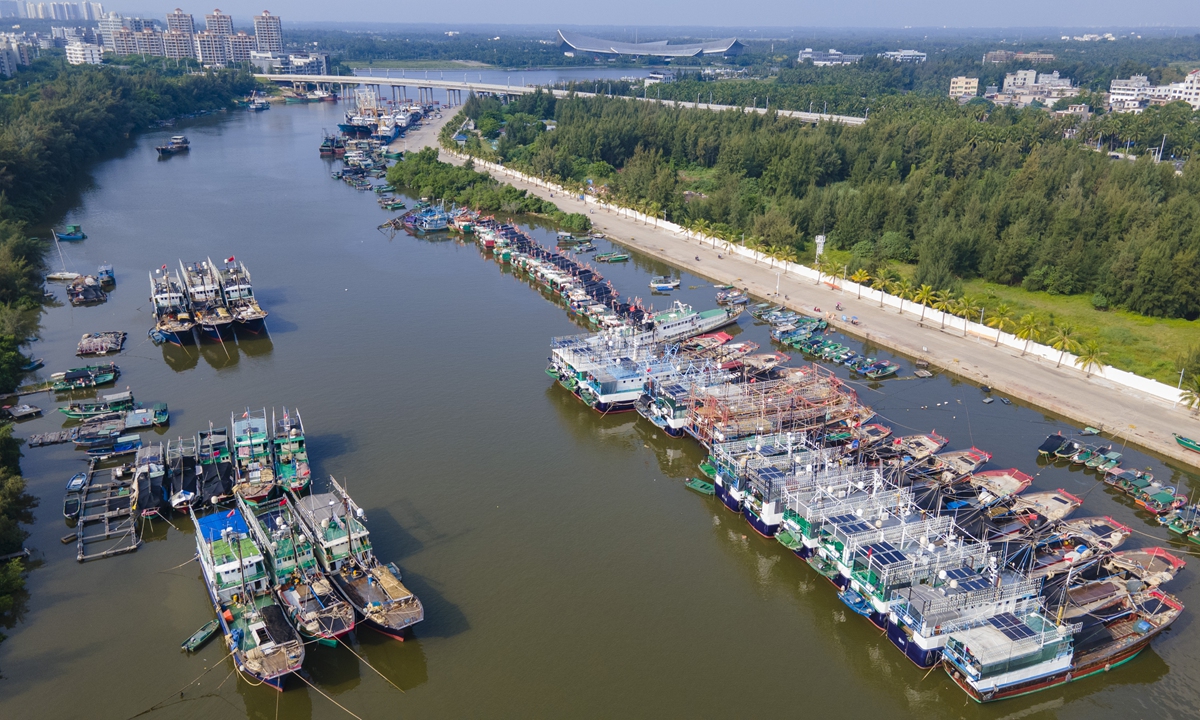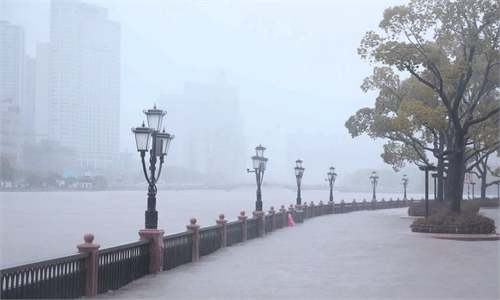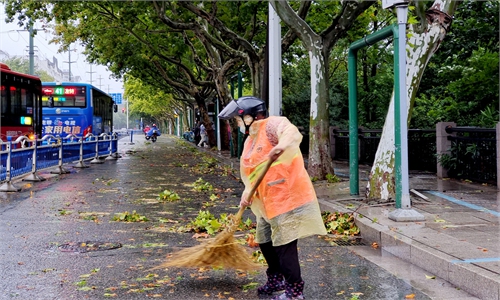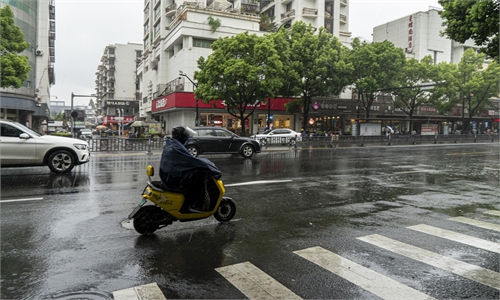Typhoon Noru hits South China Sea; coastal areas on full alert
Typhoon Noru expected to affect South China Sea, South China coastal areas

Fishing boats harbor at a port in Qionghai city, South China's Hainan Province to shield from typhoon Noru on September 26, 2022. Photo: IC
China's National Meteorological Center (NMC) issued a yellow warning ahead of the arrival of Typhoon Noru. The typhoon killed five rescue workers in the Philippines where it first landed, and it hit the central and eastern parts of the South China Sea on Monday morning.
It is expected to bring gales and rainstorms to coastal regions of South China in the next three days, prompting local governments to take measures to protect residents. In South China's Hainan and Guangdong provinces, ships have been ordered back to harbors, tourists and residents in affected regions have been resettled, and various precautions have been put in place.
The typhoon on Sunday made landfall on the coastal areas of Aurora Province in the eastern part of Luzon island as a super typhoon with the maximum winds near the center being 55 meters per second and the minimum pressure at the center being 930 HPA. It killed four rescue workers and left one missing after it hit the main island of the Philippines.
Due to the joint influence of Noru and a cold front, regions including the coastal areas of East China's Fujian Province, South China's Guangdong and Hainan provinces, western parts of the island of Taiwan are expected to experience gales of up to 75 kilometers to 88 kilometers per hour.
Meteorologists also stated that since Noru is moving fast with strong power, and can escalate into a super typhoon when it affects the South China Sea and the coastal areas in South China, ships and personnel operated and working in the central part of South China Sea and on the Xisha Islands and the Zhongsha Islands should be evacuated from the areas in a timely manner, and the ships near the coastal areas of South China should return to the harbors.
The NMC forecasted that between 8 am on Monday and 8 am on Tuesday, heavy rains and rainstorms are expected to sweep through the Nansha Islands, the Zhongsha Islands and the Xisha Islands with some islands experiencing torrential rains of 100 millimeters to 130 millimeters per 24 hours.
The center forecasted high risks of flash floods and geological disasters in the eastern parts of Hainan between Monday and Wednesday with water levels of some small and medium rivers reaching the warning levels.
Hainan has been issuing a level III emergency response for the typhoon for two days, according to notices released by the provincial government. At a meeting on disaster prevention held on Sunday, local authorities said that all departments must stay highly vigilant as Noru might develop into a super typhoon, in which case its destructive power should not be underestimated.
Authorities urged fishing vessels at sea to return to harbor. Other types of vessels and operating platforms at sea should also take precautions. Emergency supplies and response teams have also been prepared in advance.
Neighboring Guangdong has started 24-hour monitoring of wind, water and rain and is issuing rolling releases of the latest weather forecast. Scenic spots in coastal regions and islands should properly resettle tourists and reschedule travel dates to avoid being hit by the typhoon, a local notice issued on Sunday said.
Annie Chan, a local resident in Guangzhou, capital city of Guangdong, told the Global Times on Monday that there isn't much to worry about as they are used to encountering typhoons every summer and the local government has sufficient experience and countermeasures to take. "There will be real-time typhoon tracking for us to follow, and some outdoor entertainment venues such as zoos and parks will be closed. Schools may also suspend class for a few days if the typhoon is deemed really severe, but generally speaking we won't feel particularly worried because of the typhoon," she said.
Karl Liu, also living in Guangzhou and also familiar with the local government's response mechanism for typhoons, told the Global Times that normally three main measures are taken: first, fishing vessels are called back to harbors, and transport is limited; second, anti-flooding measures are put in place in key areas, such as subway stations and mountainous areas; and third, a large amount of emergency supplies and rescue teams will be prepared in advance, including food, life jackets, lifeboats and tents.
There used to be two typhoons similar to Noru in recent years included the Typhoon Wutip in 2013 and the Typhoon Vamco in 2020. Wutip brought severe gales and storms to the South China Sea and the Hainan Province and caused 14 deaths and 48 missing in Hainan. It also caused 14 deaths and two missing in Vietnam.
Zhu Haoning contributed to the story



